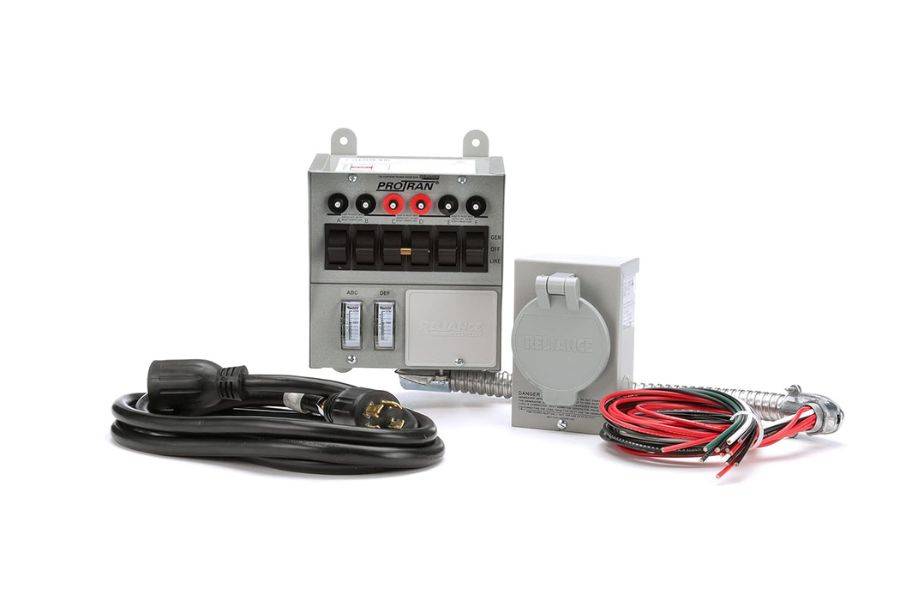Table of Contents
This guide aims to provide an in-depth look into the process of bypassing the Ground Fault Circuit Interrupter (GFCI) on a generator.

It is essential to approach this task with a clear understanding of the function and importance of a GFCI, the risks involved in bypassing it, and the necessary precautions that must be taken.
The following sections will cover everything from the reasons behind wanting to bypass GFCI to detailed steps on how to safely accomplish this task, along with the legal and ethical considerations to keep in mind.
Understanding GFCI
Purpose and Function
The Ground Fault Circuit Interrupter (GFCI) is a critical safety device designed to protect individuals from electrical shock.
It works by monitoring the flow of electricity through a circuit and quickly cutting off power if it detects a ground fault, or leakage of current outside the intended path.
This is crucial in preventing serious injuries or fatalities associated with electrical incidents.
Reasons for Bypassing
While the GFCI serves a vital protective role, there are specific, controlled situations where bypassing it may be considered.
This could include testing purposes, using the generator in environments where GFCI protection is already provided, or when utilizing certain equipment that is incompatible with GFCI devices.
It is paramount to stress that bypassing the GFCI should only be done with a comprehensive understanding of the implications and risks.
Safety Precautions
Risks Involved
Bypassing the GFCI on a generator increases the risk of electric shock, posing a significant danger to users and those around the equipment.
It removes a fundamental layer of protection designed to safeguard against electrical faults.
Necessary Safety Measures
Prior to attempting a bypass, ensure all safety measures are in place. This includes turning off the generator and disconnecting it from any power source.
Wear appropriate protective equipment, such as insulated gloves and eyewear, to minimize the risk of injury.
Tools and Materials Needed
List of Required Tools
A set of screwdrivers (both flathead and Phillips), wire strippers, electrical tape, and wire connectors will be required to perform the bypass procedure.
Ensure these tools are in good condition and rated for electrical work.
List of Required Materials
Depending on your generator model, specific bypass kits may be available. Otherwise, you may need additional wiring capable of handling the generator’s output safely.
Ensure all materials are suitable for use in high-voltage environments.
Step-By-Step Bypass Guide
This section is dedicated to providing a detailed and comprehensive guide to bypassing the GFCI on a generator. Each step is crucial and must be followed with precision to ensure safety and effectiveness.
Preparing the Work Area
- Safety First: Confirm that the generator is off and completely disconnected from any power source. This step is non-negotiable and ensures your safety during the process.
- Well-Ventilated Area: Position the generator in a well-ventilated area to prevent any accumulation of potentially hazardous fumes during operation testing later on.
- Gather Your Tools and Materials: Make sure all necessary tools and materials are within reach but safely laid out to avoid any accidental contact.
Access Panel Removal

- Locate the Access Panel: Find the panel on the generator that allows access to its internal wiring and the GFCI unit. This is typically located on the side of the generator housing.
- Remove Screws: Using the appropriate screwdriver, carefully remove the screws securing the access panel. Keep these screws in a safe place as they will be needed to reattach the panel.
- Open the Panel: Gently remove the access panel to expose the internal components of the generator, including the GFCI unit. Take care not to disturb any wiring as you do this.
Identifying and Disconnecting GFCI Connections
- Identify the GFCI Unit: Look for the GFCI unit inside the generator; it’s often located near the output receptacles and identifiable by its test and reset buttons.
- Document Wiring Configuration: Before touching any wires, take a clear photo or make a detailed drawing of the wiring connected to the GFCI for future reference. This documentation is vital for ensuring everything can be returned to its original state if needed.
- Disconnect GFCI Wires: Carefully disconnect the wires attached to the input and output terminals of the GFCI. Use wire strippers if needed and handle each wire individually to avoid confusion.
Creating the Bypass
- Prepare Wires for Bypass: For each wire you’ve disconnected from the GFCI, strip a small portion of the insulation off the end if not already done, ensuring they are ready to be connected.
- Securely Connect Wires: Using wire connectors, connect the input wire (the wire coming from the generator’s power source) directly to the output wire (the wire leading to the generator’s outlets). This effectively creates a direct path, bypassing the GFCI unit.
- Insulate the Connection: Wrap the connected wires thoroughly with electrical tape. Ensure all exposed metal is covered to prevent any potential short circuits.
- Recheck Your Work: Verify that the bypass connection is secure and the electrical tape is applied neatly, covering any exposed conductive surfaces completely.
Reassembling the Generator
- Visual Inspection: Conduct a final inspection of the work area within the generator to ensure no tools are left inside and that all wires are properly situated to avoid pinching when the panel is replaced.
- Replace Access Panel: Carefully position the access panel back onto the generator, making sure it sits flush without forcing any wires into awkward positions.
- Secure the Panel: Reinsert and tighten the screws that were previously removed to secure the access panel to the generator.
Testing the Generator Post-Bypass
Conducting a Safety Check
Before powering the generator back on, conduct a thorough visual inspection to ensure all connections are secure, and there are no loose wires or potential hazards.
It’s critical to ensure the bypass has not compromised the integrity of the generator’s electrical system.
Testing for Functionality
Power on the generator and monitor its performance closely. Check for any signs of malfunction, such as unusual noises or fluctuations in power output.
It’s advisable to use a multimeter to verify that the current is flowing correctly through the bypassed circuit.
Legal and Ethical Considerations
Understanding the Regulations
Be aware that bypassing the GFCI on a generator can violate electrical codes and safety standards, potentially leading to legal repercussions.
It’s important to research and understand the regulations applicable in your jurisdiction before proceeding.
Ethical Implications
Consider the ethical implications of compromising a safety feature on electrical equipment.
The decision to bypass a GFCI should not be taken lightly and should only be considered if absolutely necessary and within a controlled, safe environment.
Alternatives to Bypassing GFCI

Using GFCI-Protected Equipment
Rather than bypassing the GFCI on the generator, consider using equipment that is designed to be compatible with GFCI protection. This ensures safety without the need to modify the generator’s safety features.
Seeking Professional Help
If the need to bypass the GFCI arises from compatibility issues with certain equipment, consulting with a professional electrician or the manufacturer may provide alternative solutions that do not involve bypassing critical safety features.
Conclusion
Bypassing the GFCI on a generator is a complex and risky procedure that should only be undertaken with a thorough understanding of the potential consequences.
This guide has outlined the steps involved in bypassing the GFCI, along with the necessary precautions and considerations to keep in mind.
Always prioritize safety above convenience and consult with professionals whenever in doubt.









